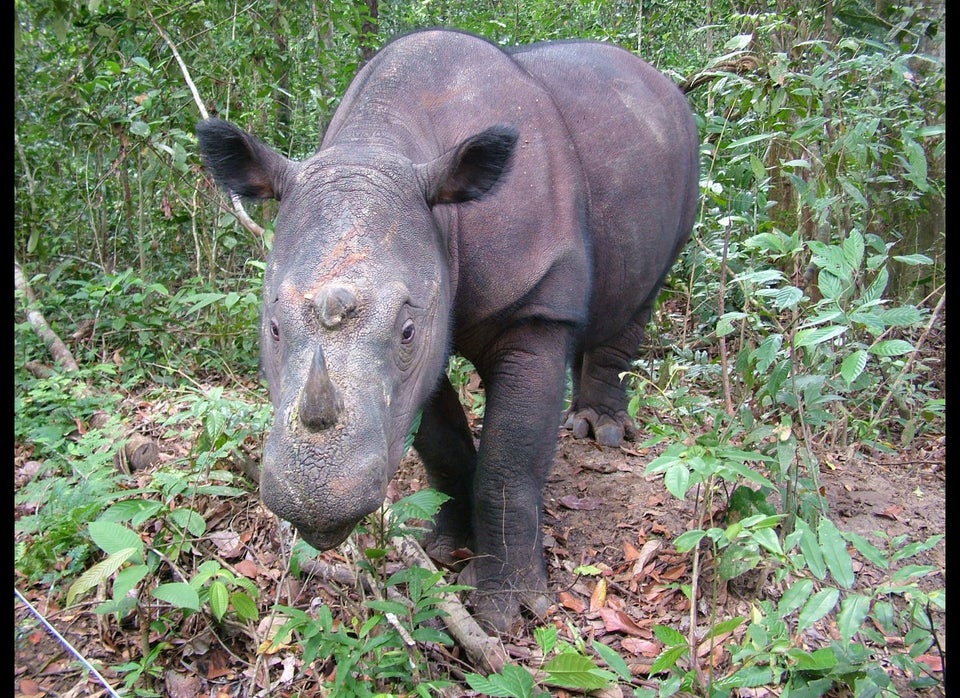
About 6 million American bats have died from white-nose syndrome since its mysterious 2006 debut, and the disease's rapid spread still threatens the survival of some species. But if scientists are right about a few little brown bats in the U.S. Northeast, there may finally be a light at the end of the tunnel.
A new study from Vermont suggests up to 96 percent of little brown bats survived last winter's hibernation in Aeolus Cave, a major bat hangout that has been riddled with white-nose syndrome (WNS) since 2008. First reported by the Associated Press, this is at least the third known case of WNS seemingly losing its grip on a bat colony. Two caves in New York have shown similar hints of recovery, and biologists in Vermont also recently found the rate of that state's bat die-off may be slowing down.
The Aeolus Cave researchers radio-tagged 442 little brown bats before hibernation began last fall, then installed equipment to record how many tagged bats left the cave after winter. They detected 43 percent of the bats leaving in spring, which alone would exceed the species' typical WNS survival rate. But since only eight tagged bats left the cave during winter — a key symptom of WNS — the researchers say their tracking devices might have missed some 200 additional survivors.
"If we've seen that many bats pass through at the correct time, and behave what we would call normally, that's really exciting," Vermont state biologist Alyssa Bennett tells the AP.
Any real rebound is still "decades away," however, the U.S. Fish and Wildlife Service noted in a tweet Monday. After its discovery in a New York cave eight years ago, WNS has spread to 25 U.S. states and five Canadian provinces, often obliterating entire bat colonies during a single winter.
"We're observing the most precipitous decline of a group of species in recorded history and it's happening right here in our region," Vermont biologist Scott Darling said in a statement earlier this year. "Several species, such as northern long-eared bats, have virtually disappeared in less than a decade and we are getting increasingly skeptical that they will ever be able to rebound."
Caused by Pseudogymnoascus destructans, a cave fungus previously unknown to science, WNS doesn't seem to affect any animal other than hibernating bats. It doesn't kill them directly, but causes them to wake up too early from hibernation and search fruitlessly for insects during winter. Its name refers to a distinctive white fuzz that grows on the noses, ears and wings of infected bats.
While P. destructans was unknown before WNS, it's similar to fungi that grow on bats in Europe without killing them. That suggests it may be an invasive species in North America, sending spores from a continent where bats have evolved resistance to a new one full of hapless hosts. For what it's worth, though, the fungus might not target bats. It can grow on almost any complex carbon source that isn't too warm, and since hibernation cools bats' bodies, they may be incidental victims.
That doesn't soften the blow to bat populations, of course, and the versatility of P. destructans means it's probably impossible to eradicate from caves — even after all the bats are gone. In other words, the fact it doesn't depend on bats to survive could make it even more dangerous to bats.
It's unclear how WNS spreads from cave to cave, but scientists think it first invaded the U.S. via spores that stuck to the shoes or clothes of spelunkers who'd traveled to Europe. That's why swaths of U.S. caves now have disinfection mats or are simply closed to the public. Every cave and mine in the U.S. Forest Service's Southern Region, for example, will remain closed until 2019.
Yet if bats in Europe have evolved resistance to related fungi, there may be a chance for similar adaptations in America. The question is whether that can happen quickly enough to save species from extinction. Not only is WNS decimating some already-endangered species like gray bats and Indiana bats, but it may soon force a previously stable species, the northern long-eared bat, to join the U.S. endangered list. That urgency is inspiring a flurry of research on WNS, especially on why some bats manage to survive the disease and how others might follow their lead.
"I don't know why these bats are still there, if it's a resilience that they have for some reason, whether it's behavioral or genetic or they are in some ways just being lucky," U.S. Fish and Wildlife Service WNS coordinator Jeremy Coleman tells the AP. "I'm beginning to be a believer despite my pessimism that we are seeing something that is real and hopefully inheritable."
For more about white-nose syndrome, check out this explainer and the related links below.
